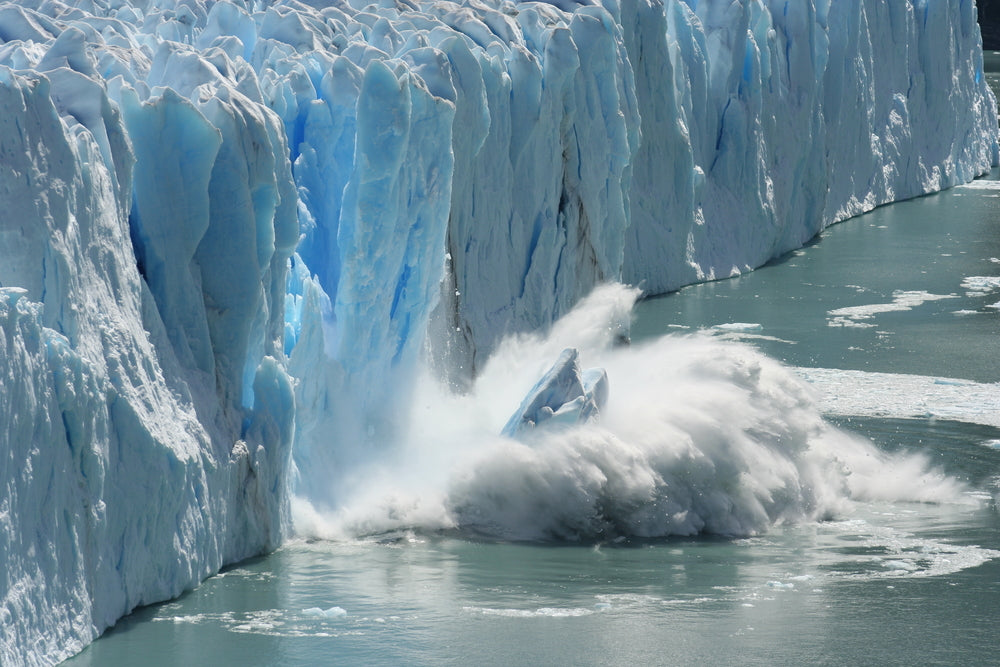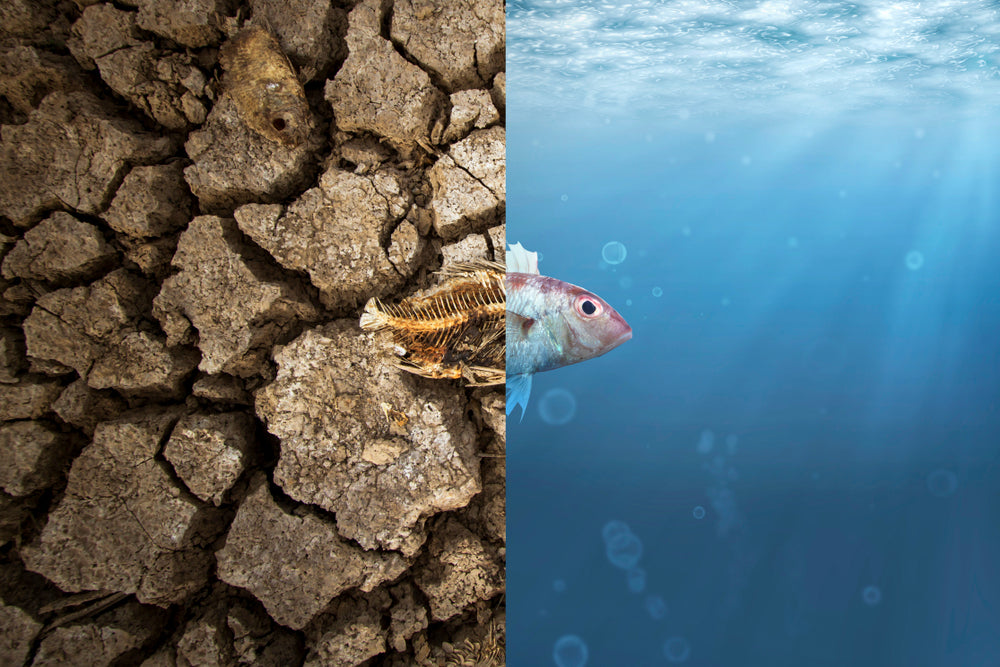Climate change, linked to global warming, has been misunderstood and mischaracterized by many.
For those people living in climates experiencing polar vortexes, the common theme is to laugh and say “thanks, global warming!”
The reality is the Earth is heating up, but that doesn’t just mean the entire planet is warmer all the time in every location.
Instead, it means that the planet’s weather patterns are changing. We’re now experiencing irregular weather and while some places experience things like a polar vortex, others have warmer than normal temperatures.
The overall change in the climate of our planet is referred to as “climate change.”
But what exactly is climate change, and how does it affect our planet? If climate change is so serious, is there anything that can be done about it?
This guide will answer common questions about climate change and offer several tangible solutions.
How is Climate Change Linked to the Greenhouse Effect and Global Warming?
Global warming, the greenhouse effect, and climate change are terms that are often used interchangeably but are not actually the same thing.
Because the terms are related to one another, it’s easy to confuse them. This confusion is what leads people to make fun of the term “global warming” when they’re experiencing an unusually cold winter day.
Because of this confusing, it’s important to define what each term really means.
Climate Change
Climate change refers to the changes in the climate created primarily by the burning of fossil fuels. Carbon dioxide, along with other heat-trapping gasses like methane and nitrous oxide, remain in the Earth’s atmosphere. These heat-trapping gasses absorb the heat from the sun effectively raising the temperature of our planet. This is sometimes called the greenhouse effect.
The Greenhouse Effect

The greenhouse effect is not inherently a bad thing. In fact, it’s what gives our planet an inhabitable temperature. Global Climate Change explains,
“These heat-trapping gases can be thought of as a blanket wrapped around the Earth, which keeps it toastier than it would be without them. Greenhouse gases include carbon dioxide, methane and nitrous oxides.”
However, the greenhouse effect can cause problems when there’s an unusual amount of heat-trapping gasses in the atmosphere. These gasses have been on the rise since the Industrial Revolution and have led to an overall increase in temperature on our planet.
Global Warming
Global warming refers to the rapid warming of our planet. While people on Earth rely on the greenhouse effect to keep us warm, for the past 200 years, the Earth’s temperature has been rising. Since the 1970s with the increased burning of fossil fuels, the temperature increase has been even more rapid.
As an explanation, NASA writes, “The world is getting warmer. Whether the cause is human activity or natural variability—and the preponderance of evidence says it’s humans—thermometer readings all around the world have risen steadily since the beginning of the Industrial Revolution.”
The earth does naturally goes through periods of warming and cooling. But there’s a difference between global warming and natural climate fluctuations. The current rise in temperature is much faster than normal.
This warming of the planet leads to climate change. Climate change can bring about a host of changes including extreme weather, flooding, wildfires, plant and animal extinction, acidification of the ocean, droughts, and famine.
What are the Effects of Climate Change
There are many changes reported around the world that scientists attribute to climate change. Below are the ones most likely to affect the ocean.
Extreme or Irregular Weather
If you’ve been paying attention to the news then you’re probably aware that there have been some very unusual weather reports.
You may have noticed things like wildfires, flooding, hurricanes, tornadoes, and extreme temperatures.
According to the website Carbon Brief,
“Scientists have published more than 230 peer-reviewed studies looking at weather events around the world, from Hurricane Katrina to Russia’s 2010 heatwave. The result is mounting evidence that human activity is raising the risk of some types of extreme weather, especially those linked to heat.”
They go on to say that their analysis,
“suggests 68% of all extreme weather events studied to date were made more likely or more severe by human-caused climate change. Heatwaves account for 43% such events, droughts make up 17% and heavy rainfall or floods account for 16%.”
And while the planet is warming up, global warming can also lead to extremely cold temperatures and blizzards. While this may seem counterintuitive, National Geographic says that this is because warming can lead to cooling.
National Geographic writes,
“As more Arctic air flows into southern regions, North America can expect to see harsher winters. That was the conclusion of a study published in 2017 in the journal Nature Geoscience. It found a link between warmer Arctic temperatures and colder North American winters.”
Scientists have also discovered that, “...severe winter weather is two to four times more likely in the eastern United States when the Arctic is abnormally warm than when the Arctic is abnormally cold.”
Changes to the Ocean

Global warming and climate change have made some significant changes in our oceans. There are many ways that the ocean has changed, but four major changes include rising temperatures, melting polar caps, rising sea level, and ocean acidification.
Rising Temperatures
Surprisingly, the ocean has absorbed 90% of the heat increase of climate change. In fact, the temperatures are rising at a rate faster than scientists originally thought.
The rising temperatures affect weather, ocean ecosystems, marine life, and cause loss of marine breeding grounds. As the ocean warms, it can increase the prevalence of disease and adds to the likelihood of extreme weather.
Melting Polar Caps and Rising Sea Level
As the planet warms, the polar caps are melting. This is sometimes referred to as “The Big Thaw.”
The polar caps are reducing the level of salt in the oceans effectively making them less dense. The addition of freshwater can change the way that the ocean circulates.
As the polar caps are melting, the sea level is also rising. This is cause for concern because many coastal areas may cease to exist. Among major cities that might be affected by the rising sea level are New York City, New Orleans, Mumbai, Osaka, Guangzhou, and London.
Ocean Acidification
While the terms global warming and climate change have been in the forefront for some time, the term “ocean acidification” is also on the rise.
The ocean absorbs a lot of our carbon dioxide emissions. The absorption has caused the ph level of the ocean to decrease which means it’s becoming more acidic.
OceanConservancy writes,
“...ocean acidity has increased 30% since the Industrial Revolution. This rate of change surpasses all ocean chemistry changes in the past 50 million years. Living in an acidifying ocean is challenging for corals, oysters, lobsters, and other shell-building animals.”
This change in the ocean’s ecosystem will not only affect the shellfish, but also the ocean life that feeds off them. If one part is affected, many parts are affected. As a result, humans who rely on the ocean for their businesses are also experiencing economic downturns.
Effects to Marine Life
Climate change also has a great effect on marine life. While there are many land mammals becoming extinct due to climate change, their ocean counterparts are disappearing at a faster rate.
National Geographic reports,
“With fewer ways to seek refuge from warming, ocean-dwelling species are disappearing from their habitats at twice the rate of those on land.”
Among those suffering from climate change are penguins, whales, and the coral reef.
Is Climate Change Reversible?

All of this information about climate change can sound really bleak. And while the trajectory that our planet is currently on is not good, there is hope.
While there are some scientists that believe that some of the results of climate change are already irreversible, that doesn’t mean we should give up.
There is still a great deal of hope for our planet. Life can continue to adapt and thrive on our planet. But in order for this to happen, most scientists agree that some drastic changes need to be made.
There are many solutions to climate change. Combined, these solutions have the potential to make a big difference. Here are some things that might help change the course of climate change.
Change the Way We Use Concrete
According to an article on Grist, there might be a way to actually reverse the climate change. Historically, the creation of concrete emits quite a bit of CO2 into the air. It’s calculated to account for 2-4% of the carbon dioxide output.
Recently, there has been a new solution for concrete that could actually take CO2 out of the air.
Grist writes,
“The technique, which has already been demonstrated in California, is part of a growing effort to not just slow the advance of climate change, but to reverse it, restoring a safe and healthy climate for ourselves and future generations.”
This change alone will not make up for all of our emission pollution, but it’s a step in the right direction.
Change the Way We Manage Refrigerants
Refrigerators, air conditioners, supermarket cases, and freezers have something in common. They use something called a refrigerant to keep things cool.
Prior to 1987, these refrigerants were chemicals known as chlorofluorocarbons (CFCs) and hydrochlorofluorocarbons (HCFCs). Due to the destruction of the ozone layer, units that used these chemicals have been phased out. The ozone layer has begun to heal over this time which is a big victory.
The CFCs and HCFCs were replaced with hydrofluorocarbons (HFC). While this is better for the ozone layer, it still emits high levels of carbon dioxide.
In response to this, in 2016, more than 170 countries gathered in Rwanda to come to an agreement. GreenAmerica writes,
“Despite challenging global politics, they reached a remarkable agreement. Through an amendment to the Montreal Protocol, the world will begin phasing HFCs out of use, starting with high-income countries in 2019 and then expanding to low-income countries—some in 2024, others in 2028. HFC substitutes are already on the market, including natural refrigerants such as propane and ammonia.”
Changes That You Can Make
It’s good to know that there are countries, companies, and scientists who are actively making changes to help with climate change.
If you want to help too, here are some ways changes that you can make in your day-to-day life that can make a difference.
- Buy energy-efficient appliances. A good way to know if they’re energy-efficient is to look for the energy star.
- Choose fuel-efficient cars or use public transportation. Reducing transportation emissions is a huge way to help with pollution in the air. Another option is to walk or bike to your destinations if possible.
- Reduce your electrical use. Another way to help is to use less electricity. You can do this by turning off lights when you leave a room, using energy-efficient bulbs, and unplugging unused appliances.
- Choose meat-free meals. You certainly don’t have to become a vegan, but choosing more meat-free meals can make a difference.
- Consume less. Another way to reduce your carbon footprint is by consuming less. That doesn’t mean that you shouldn’t purchase things, of course. But it’s a good idea to buy quality things that will last as opposed to items that will quickly deteriorate and have to be thrown away.
Climate Change and Our World
Climate change should be taken seriously, but thankfully it’s a problem with many solutions. As we work together to protect our lands and oceans, our efforts will be rewarded. Making conscious choices can and will make a difference in combating climate change and offering a safer more inhabitable place for all of us.
